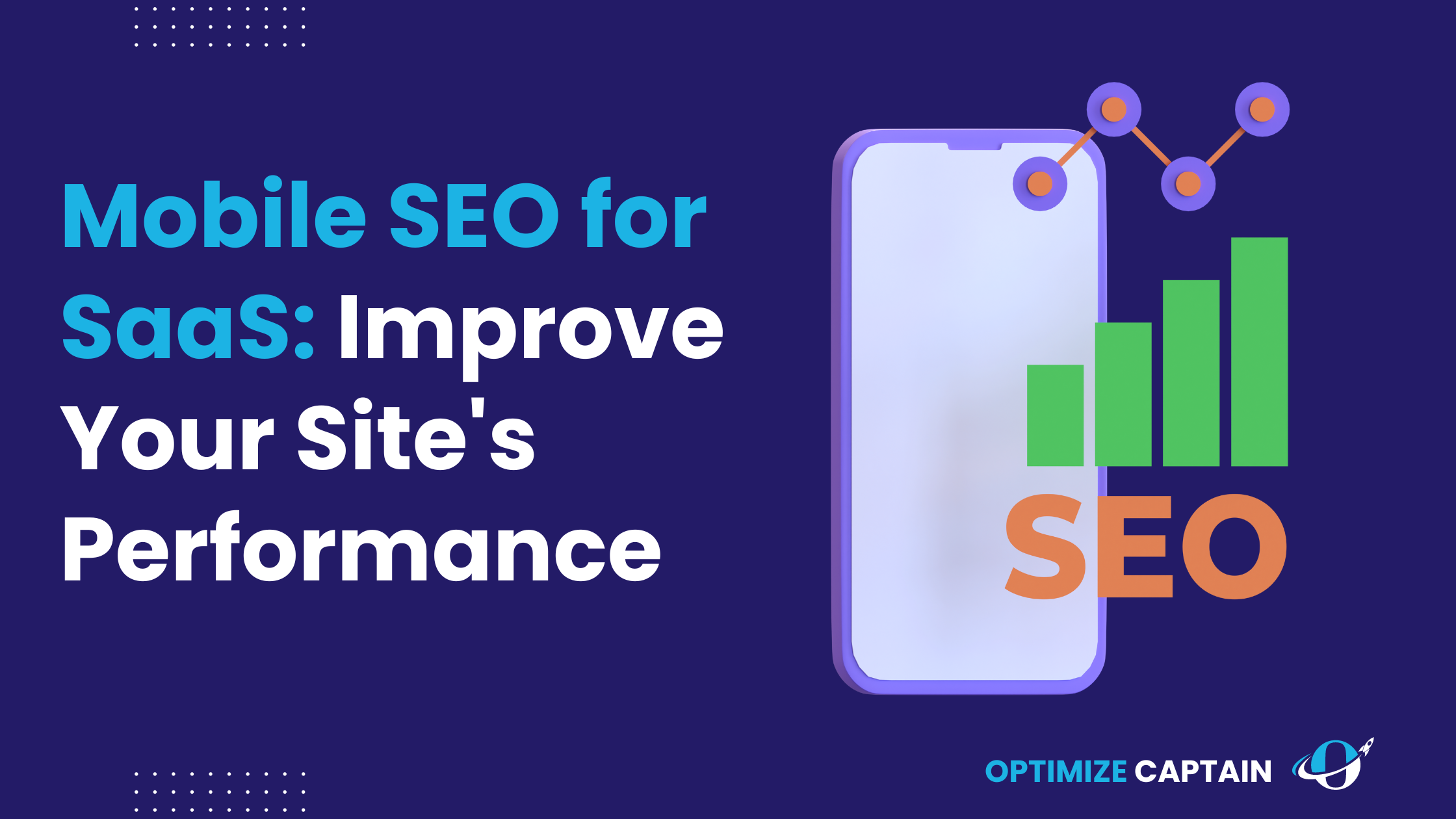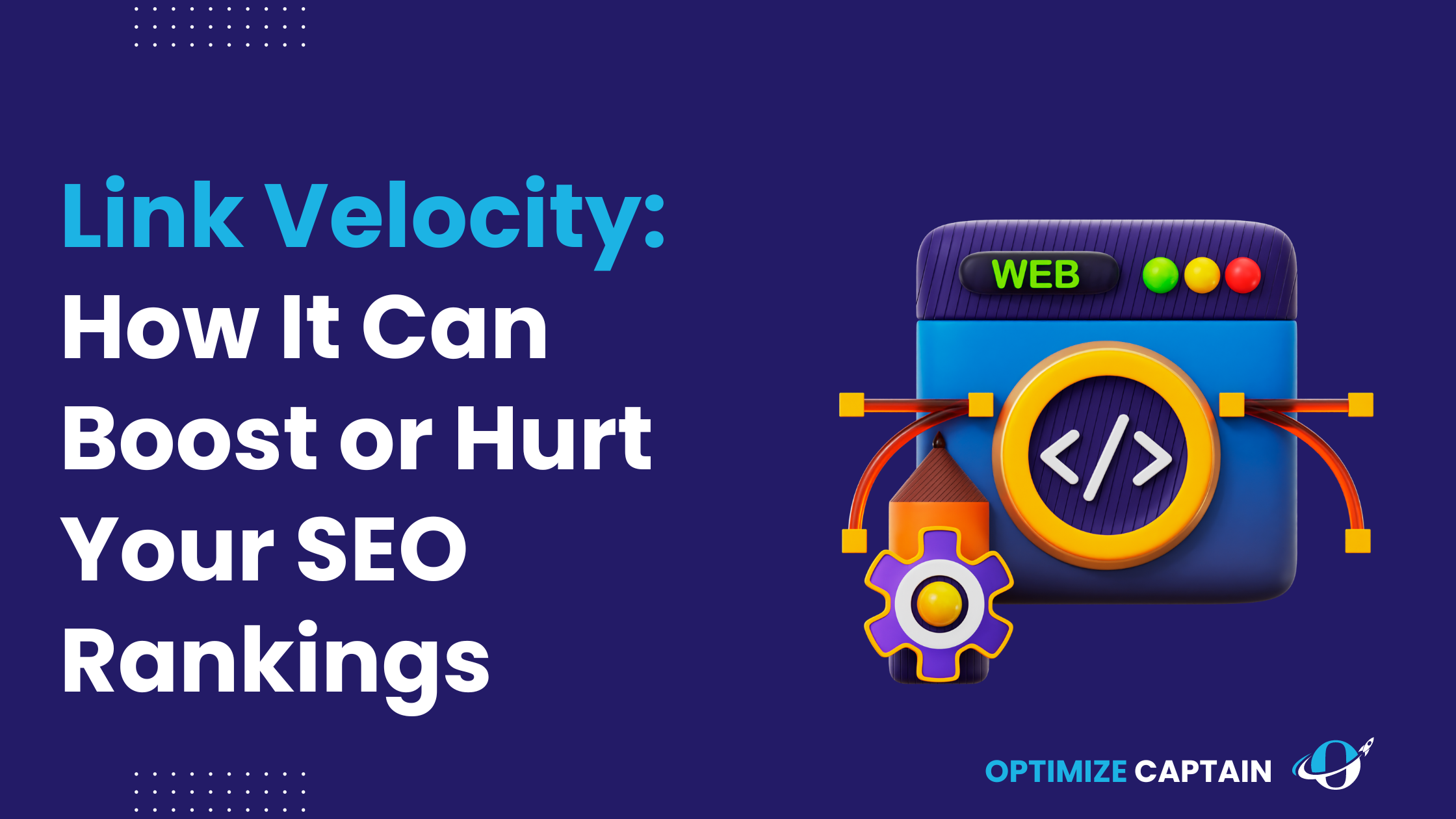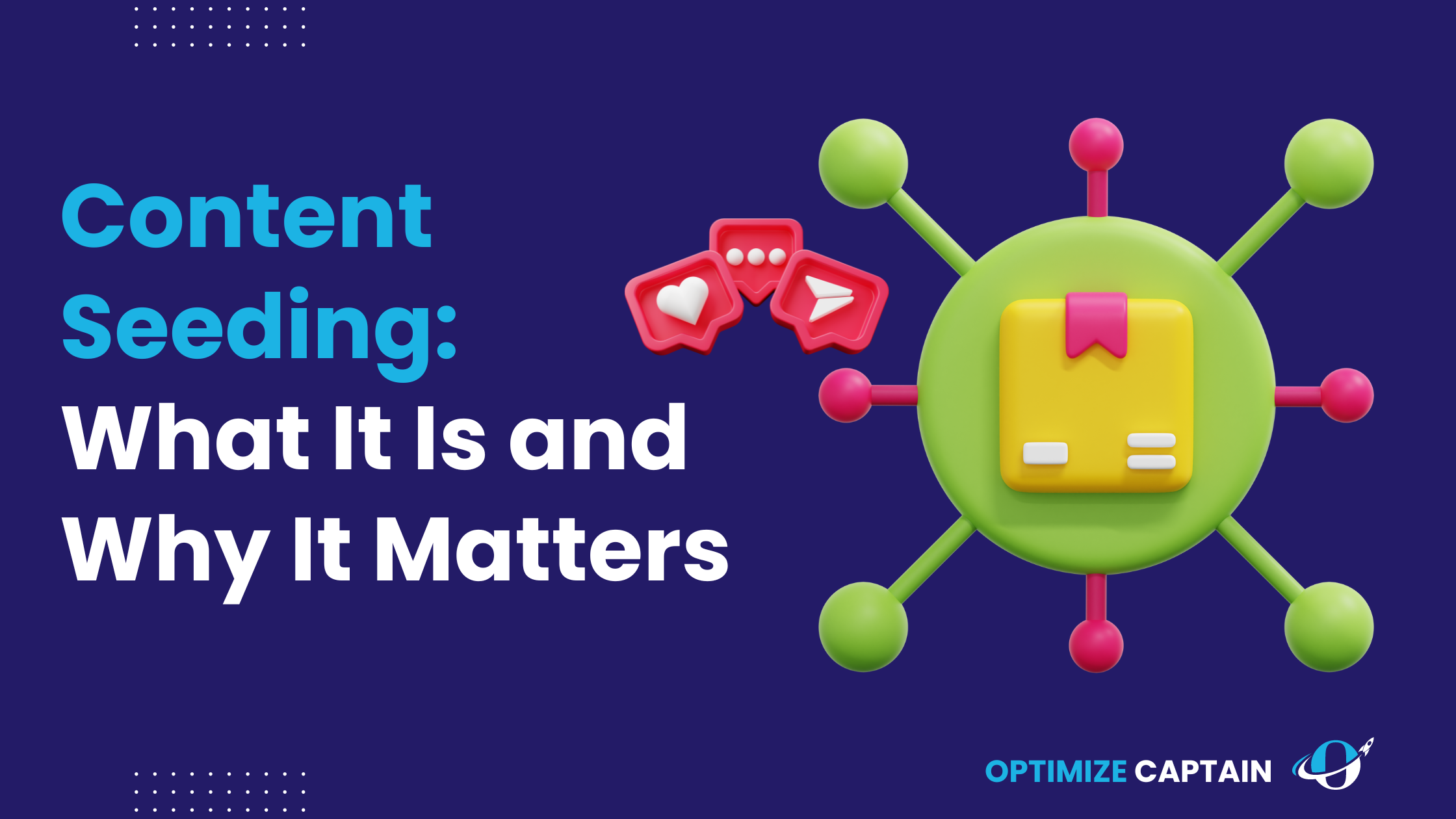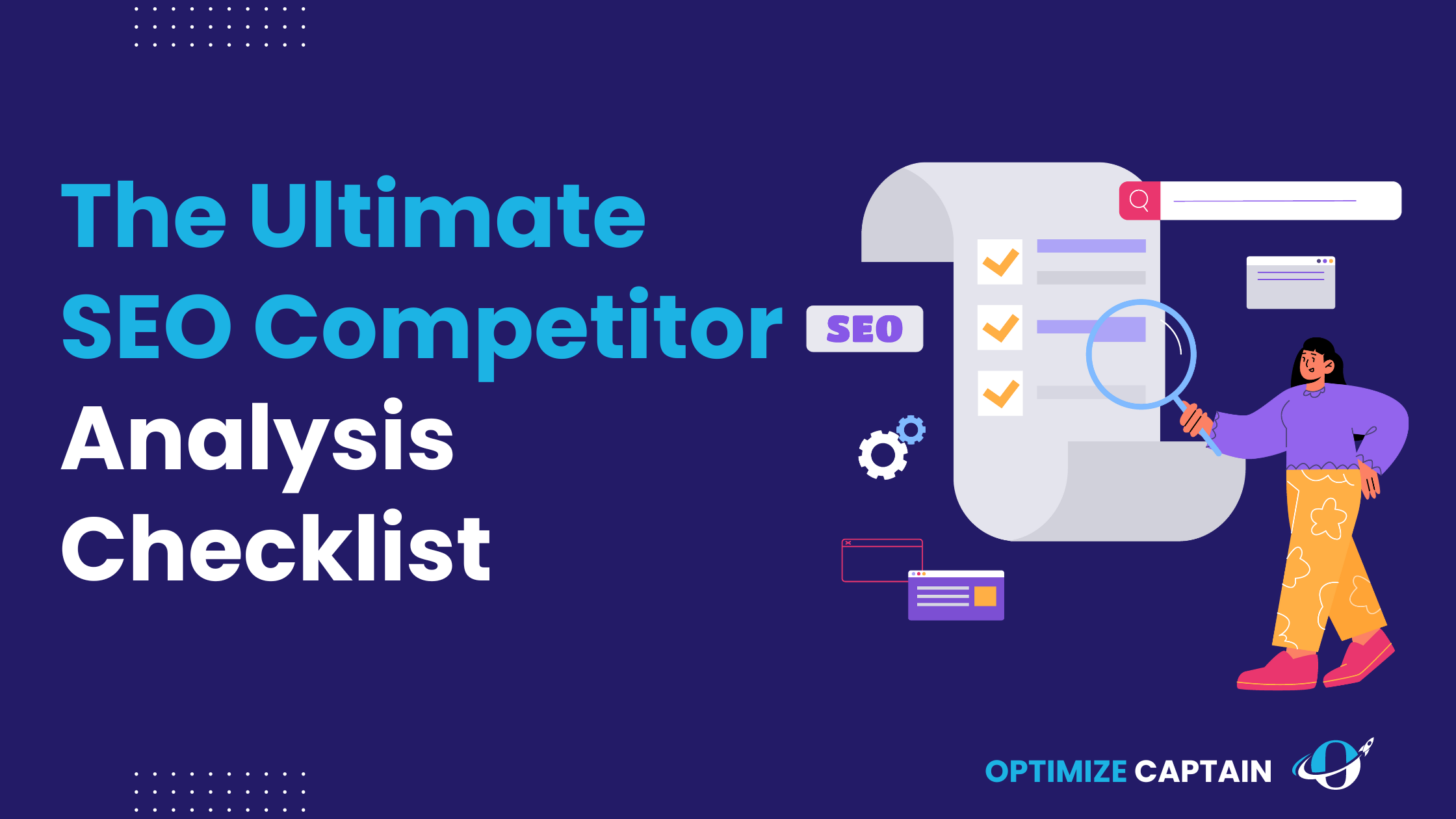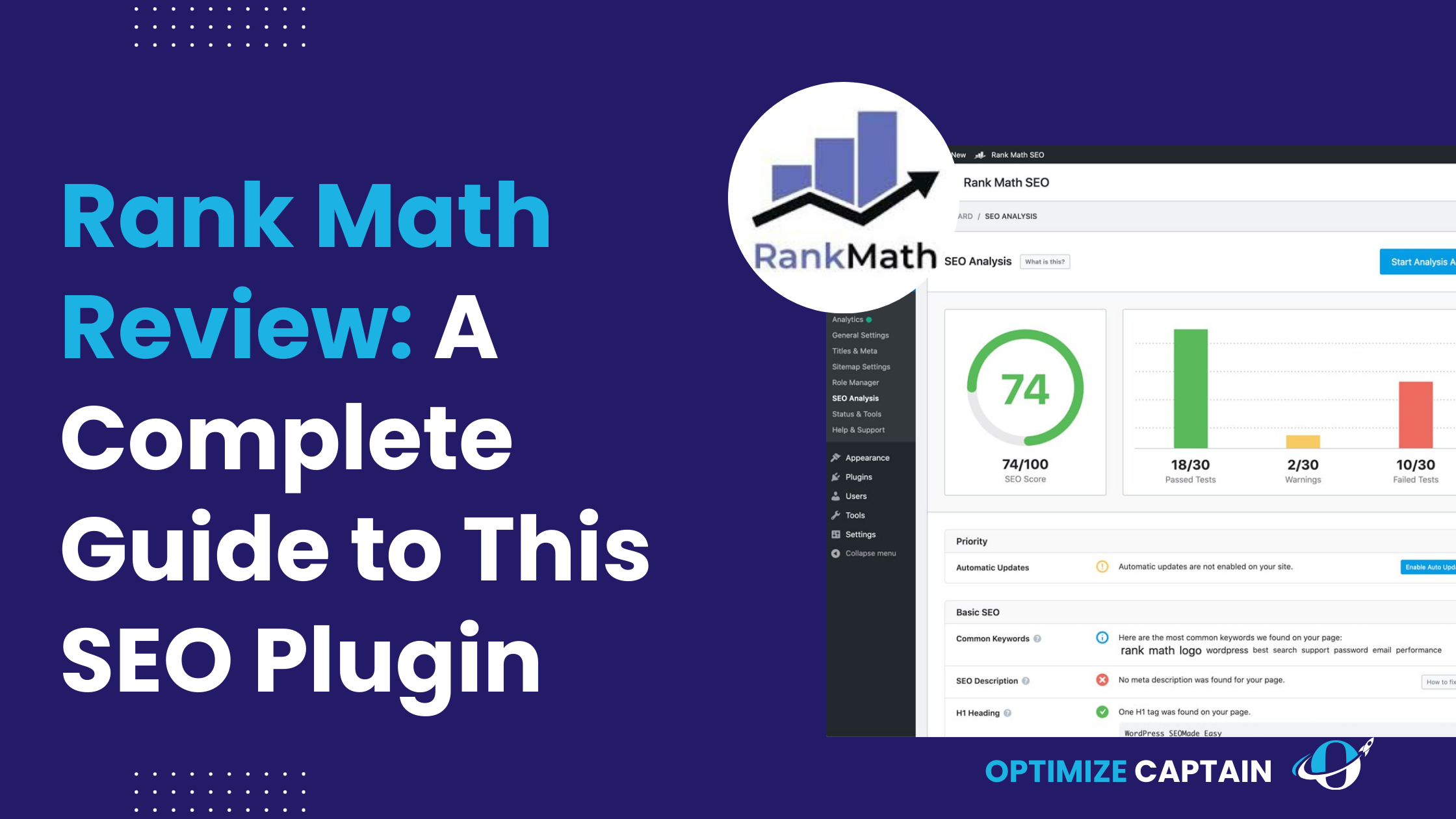Statista states mobile devices account for over 58.67% of global website traffic. For SaaS companies, this statistic is more than just a number; it’s a wake-up call. As more users shift to mobile, having a website that works well on mobile isn’t just an option—it’s crucial for staying relevant and reaching your audience effectively.
This guide comprehensively covers everything you need about mobile SEO for SaaS businesses. From practical steps to optimizing your site to strategies that drive results, it will help you enhance your mobile presence and boost your search engine rankings. Remember, the key to successful mobile SEO is understanding the strategies, implementing them, and continuously improving your approach.
Understanding Mobile SEO
What is Mobile SEO?
Mobile SEO is optimizing your website so it works well on mobile devices. This ensures your site loads quickly, looks good on different screen sizes and is easy to navigate. For SaaS companies, where the user experience is key to gaining and keeping customers, mobile SEO is incredibly important.
Why is Mobile SEO Important for SaaS Companies?
In SaaS, customer journeys are often complex and involve multiple steps. A potential customer might start by researching your product on a desktop at work and then continue exploring it later on their mobile phone. You risk losing that customer if your site doesn’t provide a smooth mobile experience.
For instance, if your mobile site is slow, difficult to navigate, or lacks crucial information, users might become frustrated and leave. This underlines the fact that mobile SEO isn’t just an add-on—it’s a necessity to ensure your customers have a positive experience, regardless of the device they’re using. The potential loss of customers due to a poor mobile site experience should serve as a wake-up call for SaaS companies, urging them to take immediate action.
Mobile SEO vs. Desktop SEO
Key Differences
While desktop SEO and mobile SEO share many concepts, they cater to different user behaviours. Mobile users often need quick answers because they might be on the go or have limited time. Desktop users might be more likely to dive deeper into content and explore more thoroughly.
Let’s explore this:
- User Intent: Mobile users typically have more immediate needs, such as finding quick information or completing a task quickly, while desktop users may be doing more detailed research.
- Search Queries: On mobile, search queries tend to be shorter and more conversational, often because of voice search. Desktop queries, on the other hand, are usually more specific and detailed.
Technical SEO Considerations
Several technical aspects are critical for mobile SEO. Your site needs to load quickly, adjust properly to different screen sizes, and be easy to use on smaller screens. Compressing images and minimizing redirects can significantly improve load times on mobile devices. Other technical considerations include optimizing your site’s code for mobile devices, ensuring proper use of meta tags, and implementing structured data for mobile search results.
Responsive Design: This ensures that your website automatically adjusts its layout based on the device’s screen size. It’s not just about shrinking down a desktop site; it’s about ensuring the layout, images, and content look good and work well on mobile.
Page Speed: Speed is crucial for mobile SEO. If a page takes too long to load, users might leave before it even finishes loading. Consider compressing images and using modern formats that load faster to improve speed.
Related Read: Technical SEO for SaaS Companies
Mobile-First Indexing and Its Impact on SaaS
Google’s Mobile-First Indexing
Google now uses the mobile version of your website as the primary version for ranking purposes, a shift known as mobile-first indexing. This means if your mobile site needs more content or features found on your desktop site, your overall SEO could improve. Mobile-first indexing is a significant change in Google’s ranking system, and it’s important for SaaS companies to fully understand and adapt to this shift to stay ahead from their competitors.
How Mobile-First Indexing Affects SaaS SEO
This shift emphasizes the importance of having a robust mobile site for SaaS companies. If your desktop site has all the bells and whistles, but your mobile site is stripped down or slow, your rankings might stay the same. The responsibility lies in ensuring that your mobile site is just as comprehensive and functional as your desktop site, and taking proactive steps to make this a reality.
Here’s how you can make sure your SaaS website is ready for mobile-first indexing:
- Content Parity: Ensure that all the content on your desktop site is also available on your mobile site. This means not hiding or removing content just to simplify your mobile site. Google expects consistency in the content available on both versions of your site, and failing to provide this can negatively impact your SEO rankings.
- Mobile Usability: Test your site on various mobile devices to ensure users can easily navigate, fill out forms, and access all features. Google’s Mobile-Friendly Test can help you spot issues.
- Technical SEO: Optimize images, reduce redirects, and use browser caching to ensure your mobile site loads quickly and efficiently.
Key Mobile SEO Strategies for SaaS Companies
Optimizing for Mobile Speed
Page speed is a crucial element of mobile SEO. Studies show that a delay of even one second in mobile load time can reduce conversion rates by as much as 20%. For SaaS companies, where users might sign up for trials or explore product features, slow load times can turn potential customers away.
What is the Ideal Page Speed?
Ideally, your mobile site should load in under three seconds. According to Google, a page that takes more than three seconds to load could lose nearly 53% of mobile users. With attention spans getting shorter, every millisecond counts.
How to Improve Mobile Speed:
- Compress Images: Use tools like TinyPNG to reduce the file size of images without losing quality. This simple step can dramatically speed up your mobile site.
- Minify Code: Minifying code means removing unnecessary characters from your HTML, CSS, and JavaScript files. This reduces file sizes and helps your site load faster.
- Leverage Browser Caching: By storing some elements of your website on the user’s device, browser caching reduces load times on repeat visits. This not only improves user experience but also reduces server load.
Tools for Measuring and Improving Page Speed:
Tools like Google PageSpeed Insights and GTmetrix can help you analyze your current page speed and offer suggestions for improvement. These tools will provide detailed reports on what might be slowing your site down, from large images to unoptimized code.
Why Page Speed Matters for Mobile Users
People spend an average of 3 hours and 15 minutes daily on their mobile devices (Source: eMarketer). Given this high usage, they expect quick, seamless experiences. Combine this with the average attention span of just 8 seconds, and it becomes clear that slow page speeds can result in lost opportunities.
If your mobile page speed is lacking, you could lose a significant portion of potential customers before they see your product offerings. The faster your site loads, the more likely users will stay and engage with your content.
Mobile-Friendly Content
Mobile users often skim content rather than reading it in depth. Your content needs to be easy to read and navigate on smaller screens.
Example of Effective Mobile Copy:
Let’s say you’re offering a free trial of your SaaS product. A clear, concise headline might say, “Start Your Free Trial Today,” followed by a brief explanation: “No credit card required. Get full access to all features for 14 days.” The call-to-action button could then simply say, “Start Free Trial.”
This approach makes it immediately clear what the user is being offered and what action they need to take.
Users might miss the offer if your copy ineeded to be more concise or clear. For example, “Experience the full range of features with our trial, available for a limited time at no cost to you.” While this is still a reasonable offer, it’s not as direct, and the key details are buried within the text.
Tips for Mobile Content:
- Short Paragraphs: Break your content into smaller, more manageable sections. Aim for at most 2-3 sentences per paragraph.
- Bullet Points and Lists: These help highlight important information and make it easy for users to find what they want.
- Clear CTAs: Your call-to-action buttons should be large enough to tap easily and have plenty of space around them to avoid accidental clicks. Place them where they are easily visible, like at the top of the page or after key sections.
Structured Data and Schema Markup
Structured data helps search engines understand your site’s content better, which can improve its appearance in search results. This is especially important for mobile SEO because structured data can influence how your content appears in mobile-specific features like rich snippets.
Best Practices for Structured Data:
- Use JSON-LD: JSON-LD is the preferred method for adding structured data to your site because it’s easy to implement and less prone to errors.
- Focus on Mobile-Specific Features: Optimize for mobile-specific elements, such as carousels and rich snippets. For example, if you offer a free trial, make sure this offer appears as a rich snippet in search results.
- Test Your Structured Data: Use Google’s Structured Data Testing Tool to ensure your structured data is correctly implemented and error-free. This is crucial for both your mobile and desktop versions.
Mobile Usability and User Experience
User experience (UX) on mobile can significantly impact your SEO. A site that’s easy to use on mobile will keep users engaged, lower bounce rates, and improve your overall site metrics.
Improving Mobile UX:
- Touch-Friendly Design: Make sure all interactive elements, like buttons and links, are large enough to be tapped easily without zooming. A target size of at least 44×44 pixels is generally recommended.
- Simplified Navigation: Use a mobile-friendly menu that’s easy to navigate with a few taps. For instance, hamburger menus are popular because they save space and keep the interface clean.
- Fast Loading Forms: Make forms easy to fill out on mobile by minimizing the amount of typing required. Use auto-fill options and drop-down menus where possible.
Don’t Overcomplicate the User Journey
It’s worth noting that sometimes a messy site can outperform a beautifully designed one regarding conversions. Why? Because human psychology favours simplicity and ease of action.
For example, a site that quickly presents a clear call to action—such as a form or sign-up button—might convert better than a well-designed site that overwhelms users with too many options. If users can’t easily see what to do next, they might leave without taking any action.
Key Takeaways:
- Keep it Simple: Your mobile site should not be cluttered with too many calls to action. Instead, focus on guiding the user to one or two clear actions.
- Avoid Confusion: A single, prominent CTA is more effective than multiple options that might confuse the user about where to click.
Local SEO Considerations
Local SEO is crucial for SaaS companies that target specific regions or cities. Many mobile searches are location-based, and optimizing your site for local SEO can help you capture this traffic.
Local SEO Tips for Mobile:
- Include NAP Information: Ensure your business name, address, and phone number (NAP) are displayed and consistent across your site. This is vital for appearing in local search results.
- Optimize for ‘Near Me’ Searches: Use location-based keywords and optimize your Google My Business listing. For example, if your SaaS product is aimed at businesses in a particular city, include that city’s name in your meta descriptions and content.
- Use Local Structured Data: Structured data focused on location can help search engines understand your local presence. This can improve your chances of appearing in local packs or map results in mobile searches.
Measuring the Success of Mobile SEO Efforts
Key Metrics to Track
To measure the effectiveness of your mobile SEO strategy, it’s important to track key metrics such as mobile traffic, bounce rates, and conversion rates. Additionally, compare your mobile and desktop rankings to identify gaps.
Mobile Traffic: Monitor the number of visitors accessing your site from mobile devices. This will show you how well your mobile SEO efforts are working.
Bounce Rate: A high bounce rate on mobile might indicate that users aren’t finding what they’re looking for or that your site is difficult to navigate. This is a key metric to monitor and improve.
Conversion Rate: Track how many mobile users complete desired actions, like signing up for a trial or purchasing a subscription. A low mobile conversion rate could signal issues with usability or content.
Tools for Monitoring Mobile SEO
Use tools like Google Analytics and Google Search Console to monitor your mobile SEO performance. These tools offer valuable insights into how users interact with your site on mobile devices and can help you identify areas for improvement.
Google Analytics: This tool provides detailed reports on mobile traffic, bounce rates, and conversion rates. You can segment your data to compare mobile and desktop performance side by side.
Google Search Console: This tool monitors your site’s presence in Google search results. It provides insights into mobile usability issues, mobile-first indexing status, and search performance on mobile devices.
Continuous Improvement
Mobile SEO isn’t a one-time task—it requires ongoing attention. To stay ahead, regularly audit your site to ensure it aligns with the latest mobile SEO best practices and make adjustments as needed.
Mobile Audits: Conduct regular audits using tools like Google’s Mobile-Friendly Test and PageSpeed Insights. These tools will help you identify areas where your site may be underperforming and provide recommendations for improvement.
Stay Informed: Mobile SEO is always evolving, so staying up-to-date on new trends and algorithm updates is important to ensure your strategy remains effective.
Future Trends in Mobile SEO for SaaS
Voice Search and Mobile SEO
Voice search is becoming increasingly popular, especially on mobile devices. SaaS companies should optimize for voice search by focusing on natural language keywords and providing concise answers to common questions.
Optimizing for Voice Search: Include a FAQ section on your mobile site that answers common questions about your SaaS product. Ensure the answers are brief, clear, and to the point, as this is how users typically phrase voice queries.
The Impact of 5G on Mobile SEO
With the rollout of 5G, mobile internet speeds are expected to increase significantly. This means users will expect faster load times and more interactive content. SaaS companies should be prepared to meet these expectations by continually optimizing their mobile sites.
Preparing for 5G: Faster speeds will allow for more complex and dynamic mobile experiences. To keep users engaged, consider incorporating interactive elements like video content and real-time data into your mobile site.
Conclusion
Why Mobile SEO Matters for SaaS Companies
As more people use mobile devices to browse the web, making sure your website works well on mobile is crucial. For SaaS companies, a mobile-friendly site is key to attracting and keeping customers.
What to Do Next
SaaS companies should focus on improving their mobile SEO to stay on top. Start by checking how well your site performs on mobile, following the tips in this guide, and monitoring your results to ensure you’re meeting the needs of your mobile users.
FAQ’s
1. What is Mobile SEO and why is it important for SaaS?
Mobile SEO optimizes your site for mobile devices. It’s crucial for SaaS as much traffic comes from mobile. Without optimization, you risk losing potential customers.
2. How does mobile-first indexing affect my site’s rankings?
Google uses your mobile site for ranking. Your rankings could drop if your mobile site lacks content or features from your desktop site. Ensure both versions are equally robust.
3. What is the ideal page speed for a mobile site?
A mobile site should load in under three seconds. Pages that take longer can lose up to 53% of users, making fast load times essential for user experience and conversion rates.
4. How can I make my SaaS site’s content more mobile-friendly?
Use short paragraphs, bullet points, and clear headings for easy reading on small screens. Make sure call-to-action buttons are easy to tap and visible.
5. What tools can improve my site’s mobile performance?
Use tools like Google PageSpeed Insights and GTmetrix to analyze and improve mobile performance. These tools help you identify issues like slow load times and provide fixes.

